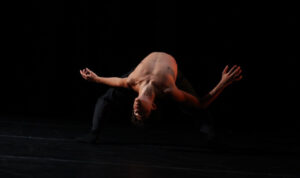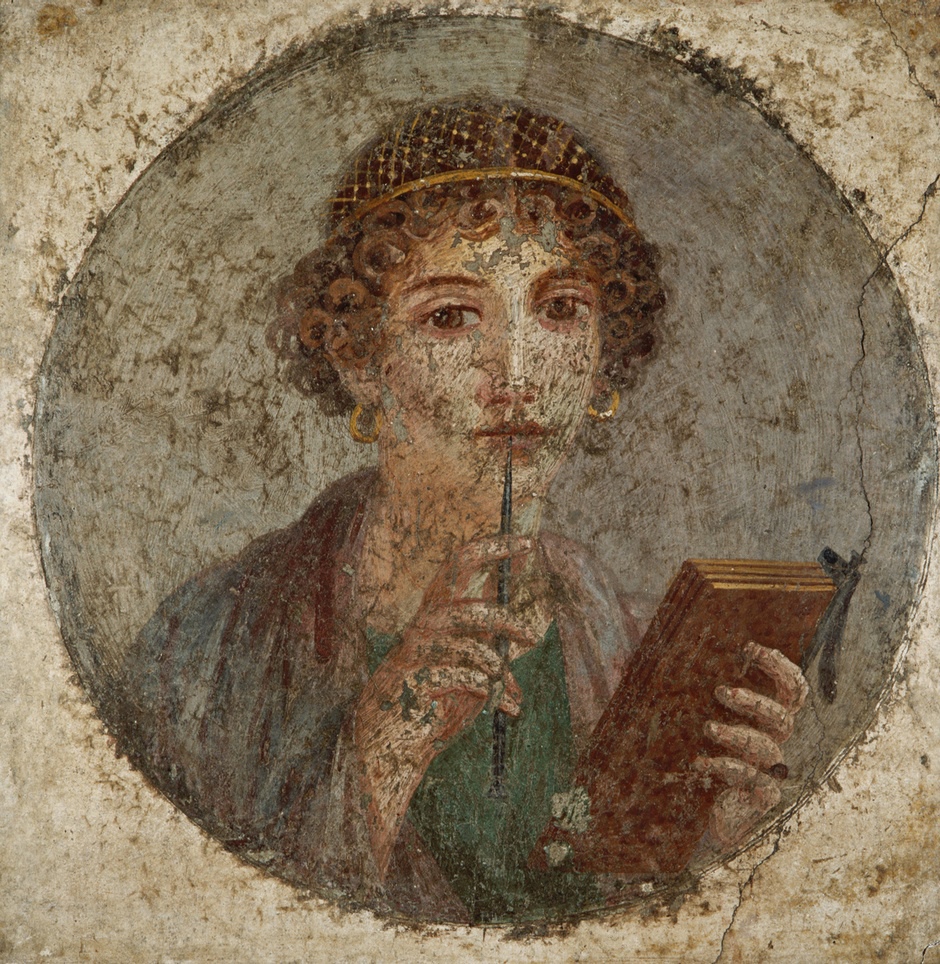In one of her works, the ancient Greek poet Sappho castigates a rich woman who did not care for art in general:
Dead you will lie and never memory of you
Will there be nor desire into the aftertime — for you do not
share in the roses
of Pieria, but invisible too in Hades house
you will go your way among dim shapes. Having been breathed out.
“Having been breathed out” is the title of a dance performance that Austinites were treated to June 17. But what does that passage mean? It presages a death that is an unending exhale. In a chilling description by Zoe Kurland in The Nonconformist, “The soul is both breathed out of the body it once occupied, and breathed out of history, intangible as air.” That, alas, is the fate of most people who have ever lived. Utter oblivion. While adopting these four words as a title intrigues one by its unusual nature, the real meaning of it seems to be that art, alone, is the source of memory. The dances as art are meant to make the people portrayed live in our hearts by making them part of our being. This is their life story.
Two of the four dances on the programme were choreographed by Brett Ishida, whose work, according to a press release, “intertwines reflections of ancient timeless themes of Greek philosophy and poetry with subconscious memories which shape who we are and where we are going.” She introduced each of the works to an audience at Dell Fine Arts Centre in south Austin.
First on the bill was Mutual Comfort by Edward Clug. Born in Romania, Clug became artistic director of the Maribor Ballet in 2003. It was technical, intricate, magical performance It struck some in the audience as very emotional and dramatic. It felt with a group of 20-somethings: lessons in love, mixing and matching (including the two guys briefly experimenting), coming apart-coming together, seeing what happens. Lots of drama and heartbreak. The sinuous neck movements of the two male dancers was particularly striking; it began the piece for an extended time, and was reprised. The very insistent, uncompromising music (terse, staccato and dissonant) was directly translated by the dancers in moves that were sometimes mirrored, and at other times ricocheted across the stage.

The second piece, Horizons, was choreographed by Andonis Foniadakis, who began his career as a professional dancer with the Ballet de l’Opéra de Lyon (1996–2002). The dance takes place at the arrival of a person in a new space, seeing what their reaction is to that. The dance was so intricate it was sometimes hard to tell whose arms and legs one was seeing! The two dancers, including Christian Denice, were flipping around and doing a gorgeous interplay. For some people I spoke to, this was their favourite of the evening.
Ishida created American Gothic, which references George Balanchine’s Four Temperaments, which premiered in 1946. It explores the internal and external dynamics of a nuclear family. While the dancers in his work had a “coolness to their look,” Ishida said she “has a different take on what he was doing. I always use a narrator,” she said, which he did not do. There is a ‘Mother’ figure here, who “transfers her negative emotional baggage into her daughter. There is truth in the notion of transference,” she explained. There was not enough differentiation for some in the audience to discern who the Mother dancer was, but for those who keyed into it, it was gorgeous. The dance, which included flamingo-like moves, wrapped up a little took quickly: the narrative at the ending was too much of a leap. In introducing the dance, Ishida drew attention to the famous painting American Gothic, a 1930 work by Grant Wood, which can be seen at the Art Institute of Chicago. But how that was supposed to relate to the music that animated the dance, which reminded one of heavy industrial machinery, is anybody’s guess. American Gothic had its world premiere in Houston a few days ago.

The final piece, Drowning, was exceptional. The two dancers came onto the stage in this Ishida creation by dropping papers all over the stage. It felt like all their thoughts, out of their head, onto the floor. The dancers felt unburdened by all this stuff they were drowning in and achieved a freedom of sorts. Ishida said the dance was inspired by a good friend. “She called late one night and I asked if she wanted me to come over. ‘I need to do this on my own,’ the friend replied. ‘I have lost something.’ It’s about coming to terms with what you are.” One audience member said “For somebody who does not like ballet, I was impressed by Drowning.”
This is the third year Ishida has graced the stage at the Dell; it was a fine evening of dance that was enjoyed by a large audience.
Dancers in the show: Christian Denice, Juliet Doherty, Hyuma Kiyosawa, Maddie Medina, Jamaii Melvin, Stefanie Noll, Grace-Anne Powers, Iris Rivera, Alejandro Vargas. Photo of Vargas here, in American Gothic, photographed by Amitava Sarkar
Location: Dell Fine Arts Center at St. Andrew’s | 5901 Southwest Pkwy, Austin
visit the website for tickets to future performances: www.ishidadance.org

